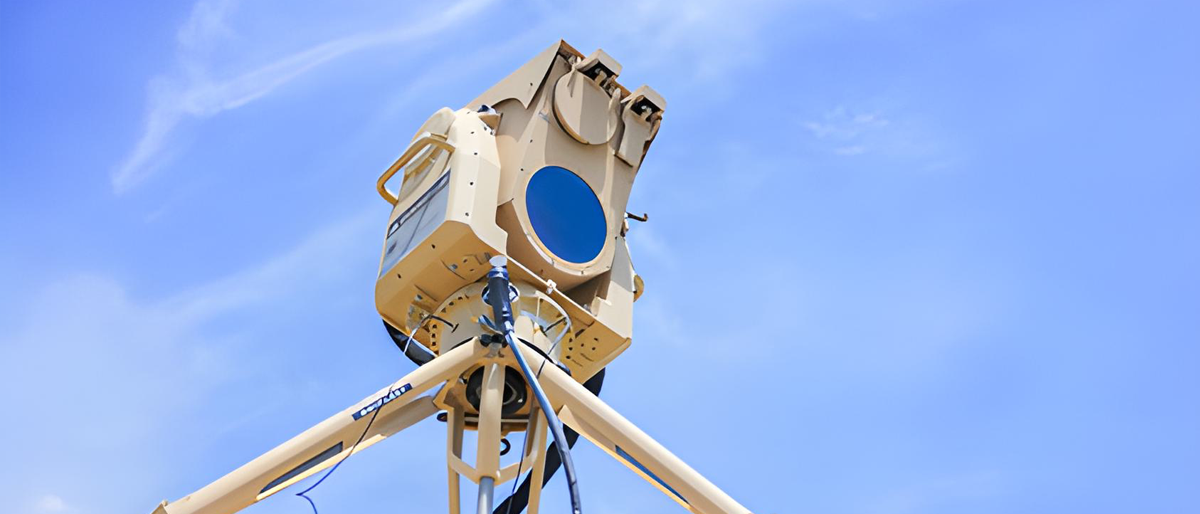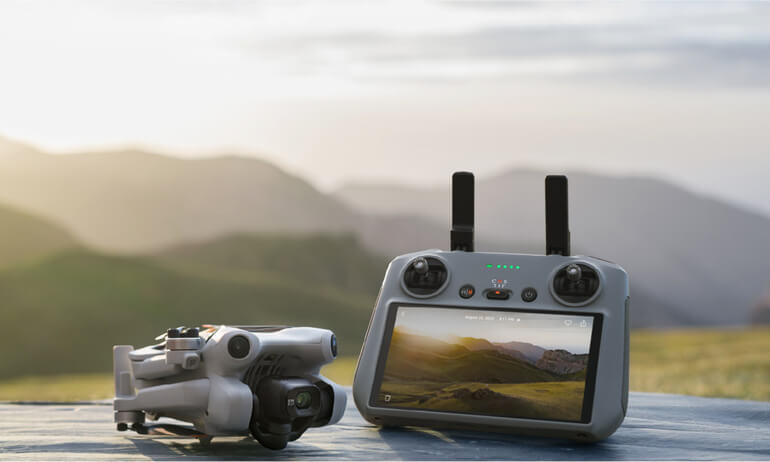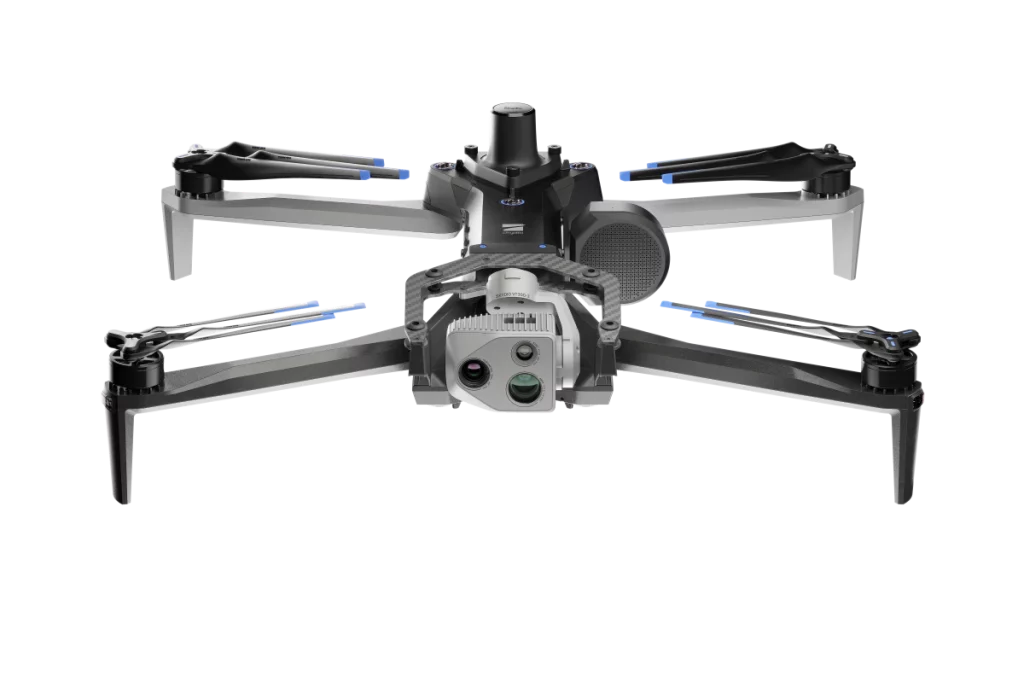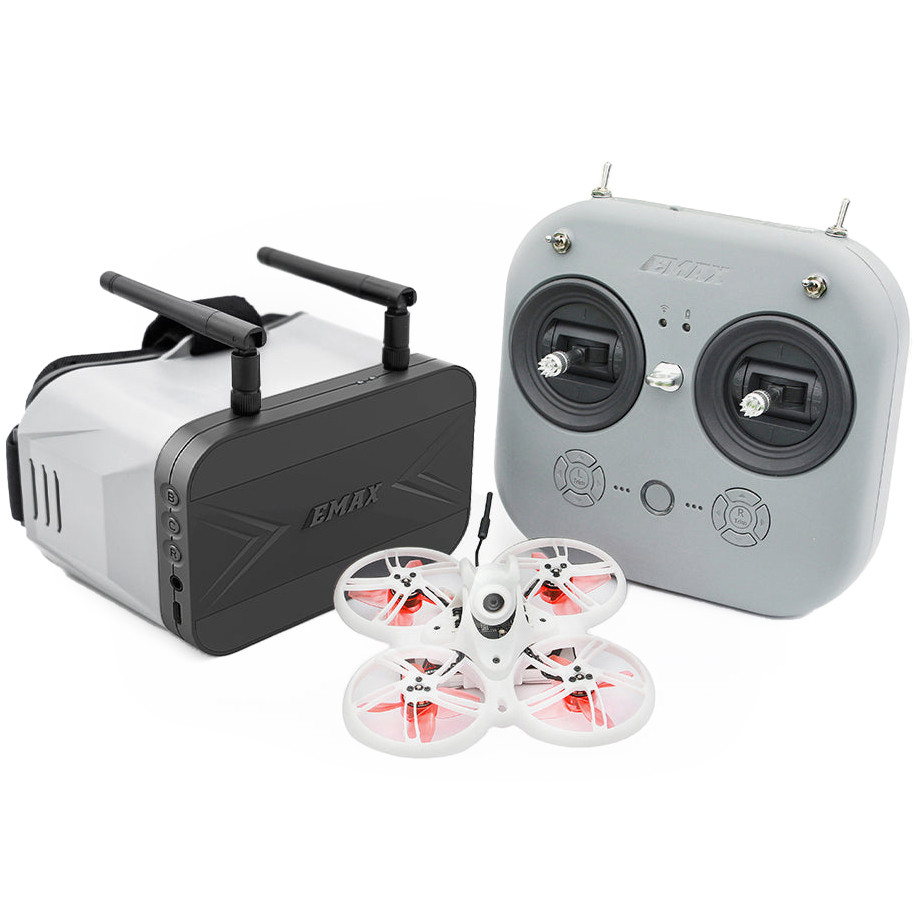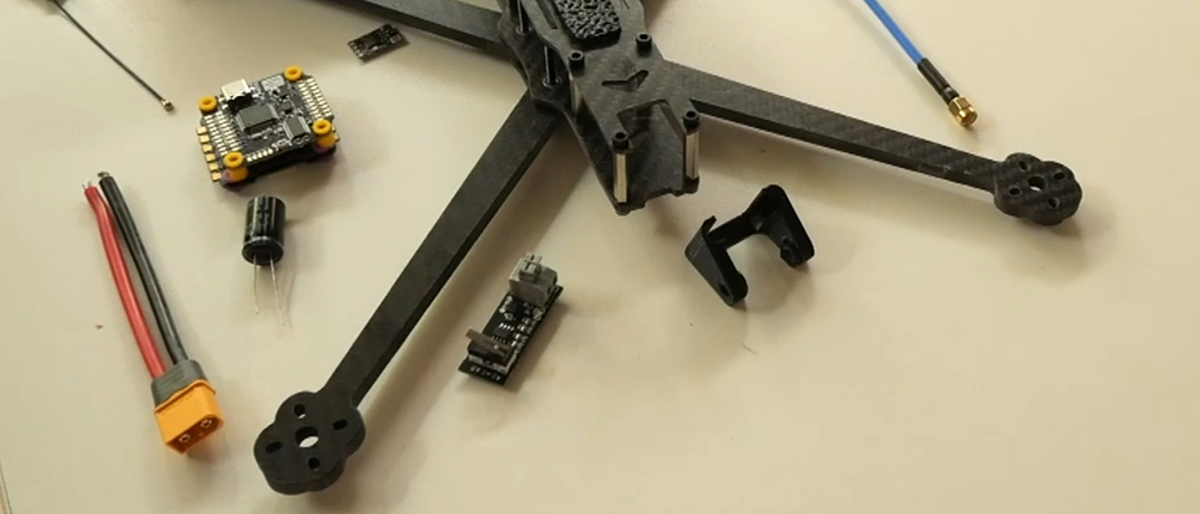UAVs aren’t just for shooting cool vacay videos or doing industrial asset inspections. With some tinkering, even a simple starter drone can become a real danger to public safety. In the actual conflict zones, anti-drone systems are saturating strategic locations.
As the adage goes, awareness is the first line of defense. So, we prepared this quick brief about counter-drone technology.
Common Types of Counter-Drone Systems
Whether you’re seeking protection or, on the contrary, want to understand the threats looming in contested airspace, here’s an overview of the most common counter-drone technology.
RF Scanners and Jammers
Radiofrequency drone scanners tune it to the spectrums, frequently used by most commercial drones to communicate with their controller. An RF scanner can easily detect, identify, and triangulate signals at 4 GHz and 5.8 GHz bands. The cheapest ones cost around $30 on Aliexpress or $80 on eBay. A more expensive $400 hand-held detector, in turn, offers detection capabilities up to a 1 km/0.6 miles range.
More advanced RF scanners can also decode transmitted metadata like drone model, operator location, or even its unique identifier, enabling drone detection without a line of sight.
Coupled with an RF jammer, this counter-drone technology can effectively take out cruising UAVs using:
- Noise jamming: Floods frequencies with random signals to overwhelm the receiver and disrupt the connection link.
- Deceptive jamming: Transmits false navigation data to jumble navigation paths or even overtake drone control.
- Barrage jamming: Blocks multiple frequencies simultaneously to take down the drone.
For example, an anti-drone gun from DroneShield creates signal interferences at 433 MHz, 915 MHz, 2.4 GHz, and 5.8 GHz frequencies at a distance of up to 2 km/1.25 miles.
DF-1 (Dome Protection) Electronic Warfare Complex from PIRANHA TECH Ltd offers even better protection with omnidirectional radio jamming in the ranges of 300 to 5900 mHz. Thanks to its compact size, it can be mounted on both buildings and vehicles to safeguard critical assets.
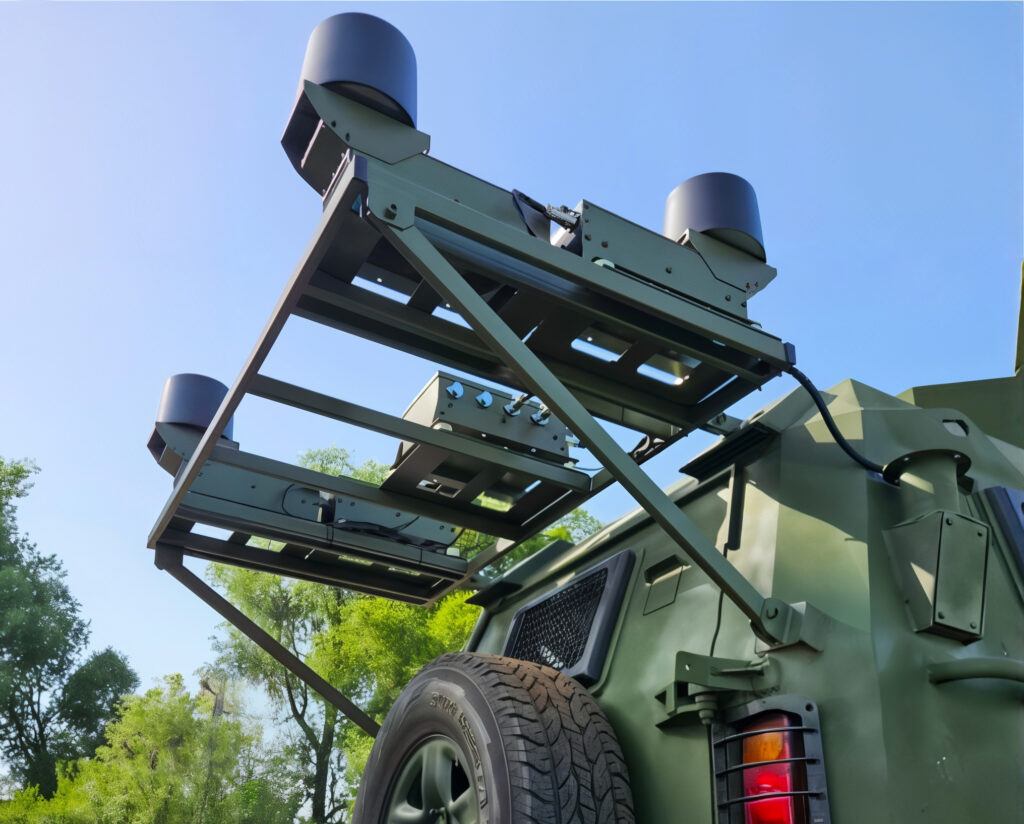
Generally, RF drone jammers can cause major havoc unless you use counter strategies like frequency-hopping, signal encryption, or fully autonomous drone flight modes.
Electro-Optical (EO) Systems
EO counter-drone systems combine HD cameras with thermal sensors to detect passing drones — their shape, movement patterns, and contrast against the background. Modern EO sensors have ultra-high sensitivity in the range of 0.001 to 0.01 lux, allowing effective drone detection at night or during low-light conditions.
Top-of-the-range EO drone detection equipment like Elbit Systems’ ReDrone™ or EOS R500 Remote Weapon System also features integrated computer vision for even sharper detection.
Once a drone is visually confirmed, the EO system can continuously track it, providing detailed data such as flight path, altitude, and speed. Or it can transmit a signal to a connected RF drone jammer to take it down.
Acoustic Sensors
Simpler anti-drone systems use acoustic sensors to detect noise signatures from passing drones, such as propeller whirring and motor humming. Using a library of known drone signatures, the system can then identify specific drone models and estimate their location and direction of movement.
A standard acoustic drone detection system usually operates in the 20 Hz and 20 kHz range, with most attuned to the 1 kHz to 10 kHz range where drone propeller and motor noise is most audible. Ukrainian military forces, for example, have built a highly effective (and low-cost) acoustic drone detection network around the country, now eyed by the US military.
For extra precision, some acoustic drone detection systems may also leverage neural networks. Generally, acoustic sensors are deployed as an alternative to RF drone jammers in urban or manufacturing areas, where RF signal noise is high and visual detection is limited.
Radar Systems
Counter drone radar systems monitor for drones entering the surveilled perimeter. By analyzing reflected radio waves, an anti-drone radar can estimate the UAV’s position, speed, altitude, and trajectory. And then alert the ground team to take action.
Unlike optical or acoustic drone detection systems, even the cheapest radars work effectively in all weather conditions and don’t require a direct line of sight, enabling long-range drone detection. More advanced ones, in turn, can even detect smaller, low-flying FPV drones with high accuracy.
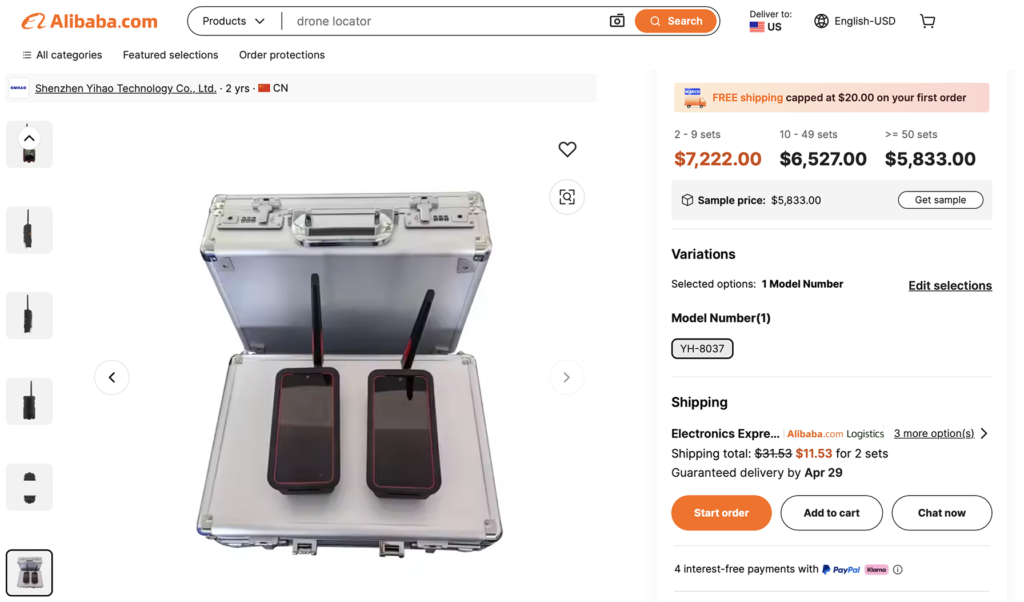
Again, anyone can purchase drone detection radars online these days on online marketplaces, with the price tag starting at about $7,000 per two sets.
GPS Drone Spoofers
GPS drone spoofers are arguably the most deployed counter-drone technology. Cheap and effective, they swap the legitimate signal for a fake one to send the UAV off course or force it to return to a fake home location.
Technically, GPS spoofers produce GPS L1 or L2 signals (1.57542 GHz and 1.2276 GHz, respectively), using synchronized timing and data structures to imitate satellite constellations. Advanced models may also adjust the timing and Doppler shift of their signals to make the deception more convincing for unsuspecting vehicles.

The cheapest GPS spoofers retail for just under $200 online, while military-grade ones go for up to $100K. The latter have a longer range, higher signal precision, and more sophisticated controls. Some models, like the KVERTUS AD G-6 anti-drone gun, also combine GPS and RF jamming to fully disorient the drone. At any rate, your best odds of ‘surviving the encounter’ is to switch to an alternative navigation mode, for example, using data from INS.
High-Power Microwave (HPM) Devices
Moving on to the realm of military-grade anti-drone weapons, we have the new breed of HMP anti-drone systems, actively tested by several governments. Such devices emit highly concentrated electromagnetic energy bursts (at a 300 MHz and 300 GHz range) to effectively “fry” the drone’s electronics.
The advantages of HPM systems:
- No reliance on visual, acoustic, or RF signatures
- Ultra-fast response even to multiple targets (e.g., in drone swarm attack scenarios)
- Non-lethal for operators or invisible bystanders
The obvious downside is the cost. HPMs retail for several million dollars. For example, the four HPM counter-swarm system prototypes commissioned by the US military cost $66 million.
Laser Anti-Drone Systems
Laser anti-drone systems are another proven method for destroying hostile UAVs. A focused beam hits the drone’s propellers, sensors, or onboard electronics until they melt, and the drone crashes.
Most laser drone guns include EO or infrared tracking to lock onto the moving target, maintain focus, and then fire a near-instantaneous laser pulse to take it down. This allows for great accuracy and minimizes collateral damage. On the downside, the system’s effectiveness goes down with atmospheric conditions such as dust, fog, rain, or smoke as these scatter or absorb the beam.
Cruise Without Disruption with Bavovna’s AI Kit
Counter-drone technologies like GPS spoofers, RF jammers, and EW drone guns have become really affordable and easy to purchase. But counter techniques evolve, too.
At Bavovna, we’ve developed a hybrid INS system, powered by AI to safely fly in hostile environments. Hosted in a protective EW case, our AI kit enables seamless navigation in GPS-denied environments, safe cruising through jammed areas, and even fully autonomous flights.
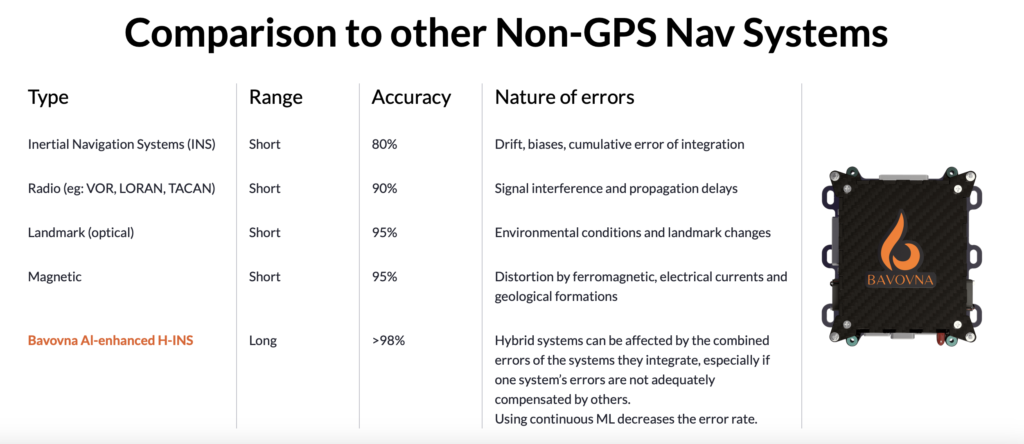
Learn more about Bavovna’s AI Navigation Kit.
